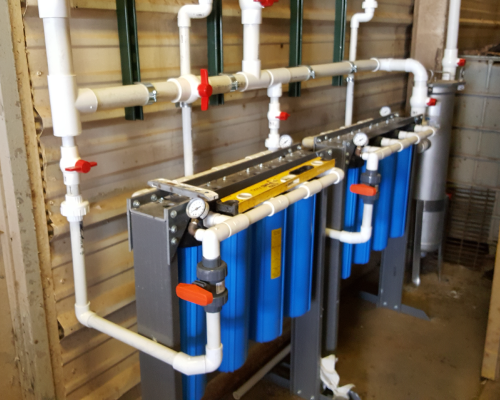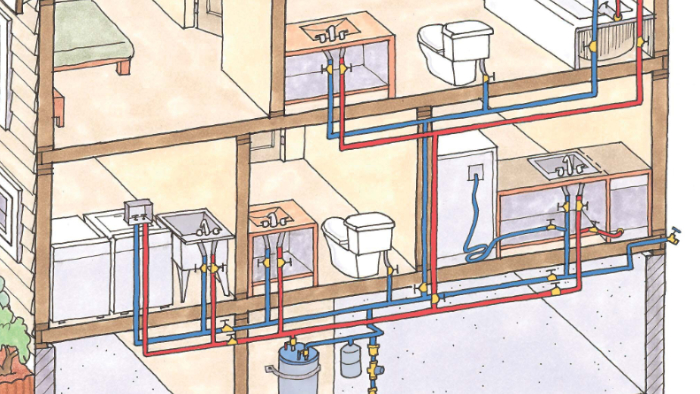Why The Design of Your Home's Plumbing System Matters
ScheduleWe've uncovered the article relating to Understanding Your Home's Plumbing Anatomy directly below on the net and think it made good sense to share it with you over here.

Recognizing how your home's plumbing system functions is crucial for every home owner. From delivering clean water for drinking, cooking, and showering to securely getting rid of wastewater, a properly maintained plumbing system is essential for your household's health and wellness and convenience. In this thorough overview, we'll discover the detailed network that comprises your home's plumbing and offer tips on upkeep, upgrades, and taking care of typical problems.
Introduction
Your home's pipes system is greater than just a network of pipes; it's a complex system that guarantees you have accessibility to clean water and efficient wastewater removal. Understanding its components and how they interact can assist you avoid costly repairs and make certain whatever runs smoothly.
Standard Parts of a Pipes System
Pipes and Tubing
At the heart of your plumbing system are the pipes and tubing that lug water throughout your home. These can be constructed from numerous products such as copper, PVC, or PEX, each with its benefits in terms of resilience and cost-effectiveness.
Fixtures: Sinks, Toilets, Showers, etc.
Components like sinks, commodes, showers, and tubs are where water is utilized in your home. Understanding how these components attach to the pipes system assists in diagnosing problems and intending upgrades.
Shutoffs and Shut-off Factors
Valves control the circulation of water in your pipes system. Shut-off valves are essential throughout emergencies or when you need to make repairs, permitting you to separate parts of the system without interrupting water flow to the whole home.
Supply Of Water System
Main Water Line
The major water line links your home to the community water supply or an exclusive well. It's where water enters your home and is dispersed to various components.
Water Meter and Stress Regulator
The water meter actions your water use, while a pressure regulatory authority makes sure that water flows at a secure stress throughout your home's plumbing system, protecting against damage to pipelines and fixtures.
Cold Water vs. Warm water Lines
Recognizing the distinction in between cold water lines, which supply water directly from the primary, and hot water lines, which lug warmed water from the water heater, aids in troubleshooting and preparing for upgrades.
Drain System
Drain Water Lines and Traps
Drain pipes bring wastewater far from sinks, showers, and commodes to the sewer or sewage-disposal tank. Catches prevent drain gases from entering your home and additionally trap debris that might cause blockages.
Ventilation Pipes
Air flow pipes enable air right into the drain system, preventing suction that might slow down drain and create traps to vacant. Proper air flow is essential for preserving the integrity of your plumbing system.
Relevance of Appropriate Water Drainage
Ensuring appropriate drainage avoids back-ups and water damage. On a regular basis cleaning drains and keeping traps can avoid pricey repairs and prolong the life of your pipes system.
Water Heating System
Kinds Of Hot Water Heater
Water heaters can be tankless or standard tank-style. Tankless heating systems heat water on demand, while containers store heated water for instant usage.
Updating Your Plumbing System
Reasons for Updating
Updating to water-efficient fixtures or replacing old pipes can improve water quality, reduce water bills, and enhance the value of your home.
Modern Plumbing Technologies and Their Benefits
Discover technologies like smart leak detectors, water-saving commodes, and energy-efficient hot water heater that can conserve money and decrease environmental effect.
Price Factors To Consider and ROI
Calculate the upfront expenses versus long-lasting financial savings when thinking about pipes upgrades. Several upgrades spend for themselves with minimized utility expenses and fewer repairs.
How Water Heaters Attach to the Pipes System
Understanding how water heaters link to both the cold water supply and hot water distribution lines assists in identifying problems like inadequate warm water or leakages.
Upkeep Tips for Water Heaters
On a regular basis purging your hot water heater to get rid of debris, examining the temperature level setups, and checking for leakages can prolong its life expectancy and enhance energy efficiency.
Common Plumbing Issues
Leaks and Their Reasons
Leaks can take place as a result of aging pipes, loosened installations, or high water pressure. Addressing leaks promptly protects against water damages and mold growth.
Clogs and Blockages
Obstructions in drains pipes and commodes are commonly triggered by flushing non-flushable items or a buildup of oil and hair. Making use of drainpipe screens and being mindful of what drops your drains pipes can stop blockages.
Indications of Plumbing Troubles to Expect
Low water stress, sluggish drains, foul odors, or uncommonly high water bills are indicators of prospective pipes issues that should be attended to quickly.
Plumbing Maintenance Tips
Normal Assessments and Checks
Schedule yearly pipes evaluations to catch concerns early. Try to find signs of leakages, rust, or mineral buildup in taps and showerheads.
DIY Maintenance Tasks
Straightforward tasks like cleaning tap aerators, checking for toilet leakages using color tablets, or insulating revealed pipes in cool climates can prevent significant plumbing concerns.
When to Call a Professional Plumbing Professional
Know when a plumbing issue needs professional know-how. Attempting intricate repair work without proper understanding can lead to even more damage and greater fixing costs.
Tips for Lowering Water Usage
Straightforward practices like dealing with leaks immediately, taking much shorter showers, and running full tons of laundry and meals can conserve water and reduced your energy expenses.
Eco-Friendly Pipes Options
Consider lasting plumbing materials like bamboo for floor covering, which is durable and eco-friendly, or recycled glass for counter tops.
Emergency situation Preparedness
Actions to Take Throughout a Plumbing Emergency situation
Know where your shut-off valves are located and just how to turn off the water system in case of a ruptured pipe or significant leakage.
Significance of Having Emergency Situation Calls Useful
Maintain contact information for regional plumbers or emergency solutions conveniently offered for quick action throughout a pipes situation.
Ecological Influence and Conservation
Water-Saving Fixtures and Appliances
Installing low-flow faucets, showerheads, and bathrooms can significantly reduce water usage without sacrificing performance.
Do It Yourself Emergency Situation Fixes (When Relevant).
Short-term repairs like utilizing duct tape to patch a leaking pipe or placing a bucket under a dripping faucet can decrease damage till an expert plumbing technician gets here.
Verdict.
Understanding the anatomy of your home's plumbing system equips you to preserve it successfully, conserving money and time on fixings. By following regular maintenance regimens and remaining educated concerning modern-day pipes modern technologies, you can guarantee your pipes system runs successfully for years to come.
Understanding Your Home Plumbing System: A Comprehensive Guide
Plumbing System: The Lifeline of Your Home
At its core, the plumbing system is designed to perform two primary functions: bring fresh water into your home and remove wastewater. The system is a network of pipes, fixtures, and other components that transport water and sewage. Residential plumbing systems include potable water supply lines, drain-waste-vent (DWV) systems, and various plumbing fixtures that make water use in daily tasks possible.
Key Components:
Water Supply: This part of your plumbing system brings municipal water into your home, passing through the main water supply line. It s responsible for supplying all water needs, from drinking to bathing.
Drainage System: It carries waste and water away from your home to the sewer or septic system. This system includes all the piping within your home that leads to external sewage or septic systems.
Vent System: An essential yet often overlooked component, the vent system allows sewer gases to escape and lets air into the drainpipes, ensuring water and waste move correctly through the system.
Fixture: More Than Just Taps and Toilets
Plumbing fixtures are the most interactive parts of the plumbing system, including faucets, showers, toilets, and sinks. Each fixture is connected to the plumbing system and plays a role in either the delivery of freshwater or the disposal of waste and wastewater.
Types of Fixtures:
Faucets and Sinks: Used for washing hands, dishes, and other daily water needs. Toilets: Dispose of human waste through the sewage system. Bathtubs and Showers: Provide bathing facilities, requiring both hot and cold water supply. Water Supply: The Source of Life
The water supply system is a critical component, ensuring that potable water is available throughout your home for various uses, including drinking, cooking, and cleaning. This system consists of pipes that distribute water to different parts of the house, controlled by valves to regulate the water flow.
Types of Plumbing: Materials and Methods
Various types of plumbing systems and materials are used in residential settings, each with its advantages and applications. From copper and PVC pipes for water supply to cast iron and ABS for drainage, the choice of materials can impact the longevity and efficiency of your plumbing system.
https://intownplumbingtx.com/articles/home-plumbing-system-guide/

I recently found that blog post about Exploring Your Homes Plumbing Anatomy when doing research the internet. Appreciated our content? Please share it. Help other people locate it. I enjoy reading our article about Anatomy of a House: Understanding the Components.
Schedule Here